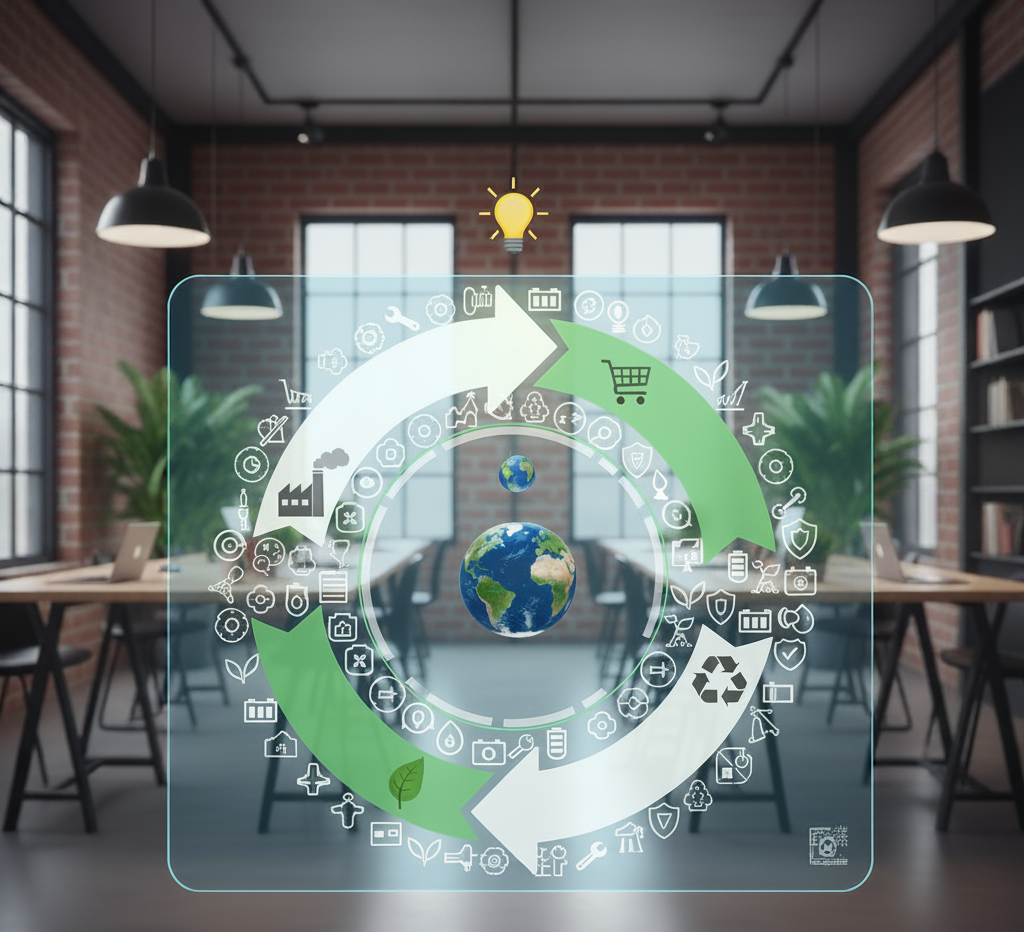
Circular Economy Navigator 🌍
Your systematic guide to building your circular business model. Ready for the future? 💡
Phase 1: Fundamentals & Analysis 🔬
We start with the foundation: Understanding the **systemic differences** between a linear and circular economy is essential. This phase will help you recognize the potential in your current model and internalize the three central principles.
Linear vs. circular system
❌ Linear model (Take-Make-Waste)
♻️ Circular model (circuit)
Three core principles for your design 💎
1. Avoid waste & pollution
Design systems from the ground up so that waste and negative externalities don't even arise. It's a design task, not a disposal task.
2. Keep products & materials in use
Maximize the service life. The product should remain in use as long as possible before the materials are returned to the technical cycle.
3. Regenerate natural systems
Go beyond "sustainable." Your system should actively have a positive impact on the environment, for example, through biological cycles and regenerative methods.
Phase 2: Conception & Design 🎨
Now it's time to create your model. We'll use the **R-Strategies** as a design toolbox and visualize which strategies create the greatest value for your team and the environment.
The R-Strategy Toolbox 🔧
The R-strategies define how you keep products and materials in circulation. Higher-order strategies (Refuse, Rethink) retain the greatest value. Click for details.
Please select a strategy to understand the value.
Each strategy has different impacts on value creation and resource consumption.
Priority of value creation (Value Hill) 📈
Strategies that keep the product or its function intact offer the highest economic and ecological value. Recycling is at the bottom of the priority chain.
Phase 3: Pilot & Launch 🏁
Turn your concept into reality! This checklist will help your team launch the pilot project systematically. Focus on validatable processes and clear key performance indicators (KPIs).
Start checklist for the circulatory pilot ✅
Phase 4: Scaling & Optimization 🚀
After a successful pilot, scale up! The most important principle here is continuous improvement. Use the collected data to increase efficiency and maximize the potential of your circular model.
The PDCA optimization cycle (Plan-Do-Check-Act) 🔄
Simulation of performance improvement 🎯
Continuous adjustments and optimizations lead to exponential growth in your circularity. See how material efficiency can improve over the years.
📚 Tools & Resources Hub
Leverage the expertise of leading organizations and proven frameworks to maximize your small team's support. Knowledge is your most important asset.
Important organizations 🏛️
- Ellen MacArthur Foundation (Global Thought Leader)
- Circularity Gap Reporting (To measure your gap)
- Cradle to Cradle Certified (design certification)
Frameworks & Models of Thought 🧠
- Product-as-a-Service (PaaS): Focus on usage, not ownership.
- Biomimicry: Be inspired by 3.8 billion years of natural design.
- Systemic design: Consider all inputs and outputs.
